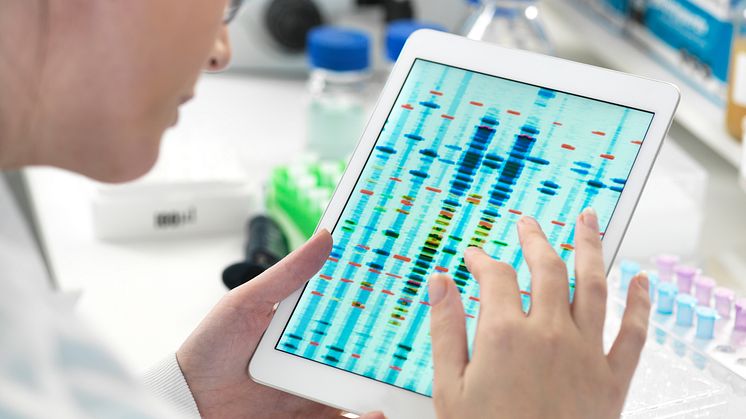
Press release -
New findings of how cells turn independent and regulate functions
Jacob Lewerentz, Department of Molecular Biology at Umeå University, contributes as of his thesis with knowledge about how cells regulate their protein level and adapt to a new milieu outside their organism. He has also investigated how protein levels are regulated in cells that remain in their organism and developed computer software for new sequencing technologies that produce long DNA-readings.
“Increased knowledge of cellular evolution is interesting both from a basic science perspective and from a cancer perspective, for example by identification of cancerous cells at an early stage for treatment or to drug-development that target cancerous ‘rearrangement mechanisms’,” says Jacob Lewerentz.
Cells that have been isolated from their host organism are common in science. A similar example of isolated cells is cancer cells that have shifted to a self-centered life inside the human body. Isolated cells have a different function that is driven by rearrangements in their genetic code.
“It was previously known that rearrangements result in an increase of certain genes, but how such increases occur has been unknown” says Jacob Lewerentz. “We show that the increases primarily occur through local duplication of genetic sequence, like double-typed words in a text.”
The structure of the duplicated sequences was identified by new sequencing technologies that enable the reading of long fragments of the genetic code. Using the long readings Jacob Lewerentz was also able to formulate a hypothesis about the “rearrangement mechanisms” that transformed the cells’ genetic code.
“The new sequencing technologies that emerged some years ago have revolutionized the field” he says. “Now a greater complexity can be captured than before. However, there is often a need to code custom algorithms to perform the analysis which obstacles many researchers to use the technology.”
In his thesis he has developed computer software that enables anyone to identify rearrangements in data produced from the new sequencing technologies. Using this software, a user can perform targeted analysis rapidly and perform explorative research.
“The software is useful for those that cannot code or that want to perform rapid analysis, for example many researchers and clinicians. It is also useful for researchers that need to visualize complex rearrangements, for example in cancer cells.”
The theme of the thesis has been how cells in different environments regulate their protein levels which in turn dictate the cell functions. Within the organism environment protein levels are primarily regulated through systems that modulate the reading of the genetic code. Incorrect regulation of gene reading is involved in multiple diseases, and it is critical that cells tune reading when faced with different numbers of gene copies, for example on sex-chromosomes.
“We have characterized the recognition-sequence for a system that specifically regulates protein levels from certain genes.”
In cells that have just been isolated from their organism the functions must change rapidly. Here, regulation at reading-level is too slow; to rapidly change protein levels the genetic code needs to be rearranged. In the thesis Jacob Lewerentz shows that cells which were recently isolated early duplicate parts of their genetic code where functions related to stress-management are located.
“It is difficult to capture the early adaptations of cells that strive to become autonomous and in this perspective our study is of particular interest, for example for cancer research” he says.
About the thesis defence
On Friday the 7 of October Jacob Lewerentz, Department of Molecular Biology, Umeå University, defends his thesis titled ”Genomic adaptation and gene-dosage regulation of Drosophila melanogaster cells, and long-read software developments.” The defense will take place at 13.00 in room Astrid Fagraeus (A103), building 6A, Norrlands Universitetssjukhus.
The faculty opponent is Prof. Dr. Casey Bergman, Department of Genetics, University of Georgia, Georgia, USA.
For more information, please contact:
Jacob Lewerentz, doctoral student, Department of Molecular Biology, Umeå University
E-mail: jacob.lewerentz@umu.se
Topics
Categories
Umeå University
Umeå University is one of Sweden’s largest institutions of higher education with over 36,000 students and 4,000 faculty and staff. The university is home to a wide range of high-quality education programmes and world-class research in a number of fields. Umeå University was also where the revolutionary gene-editing tool CRISPR-Cas9 was discovered that has been awarded the Nobel Prize in Chemistry.
At Umeå University, distances are short. The university's unified campus encourages academic meetings, an exchange of ideas and interdisciplinary co-operation, and promotes a dynamic and open culture in which students and staff rejoice in the success of others.


